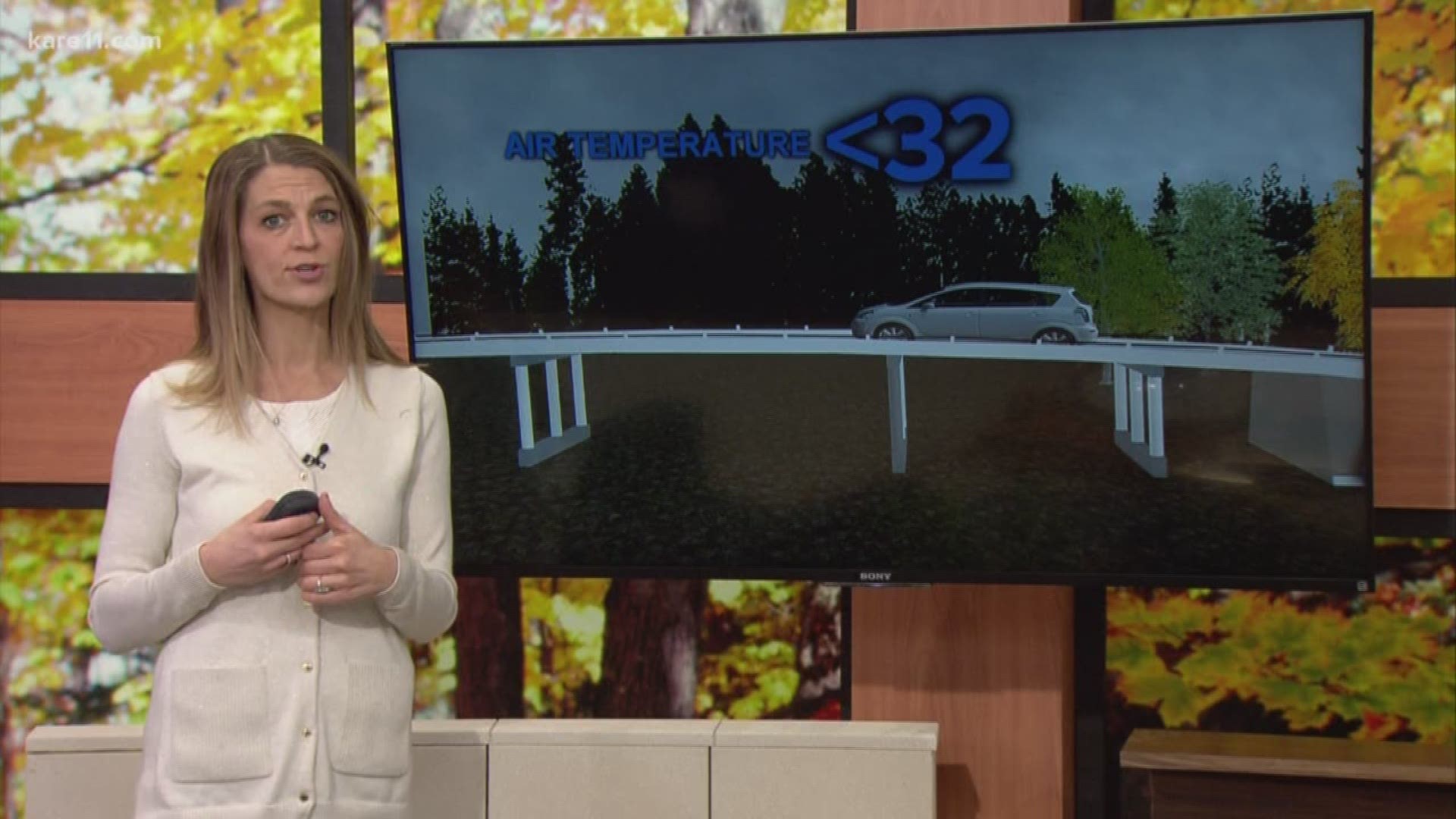Road surfaces that are in contact with the ground take advantage on ground temperatures that are often warmer than the air above. The warmer ground below can sometimes keep the road surface warm enough to prevent ice from forming.
Bridges and overpasses, obviously, are not in contact with the ground. When the surrounding air is below freezing and circulates around those suspended roadways, the surface of the bridge and overpass cools to match the air temperature. So when the bridge or overpass itself is cooler than 32 degrees, any water that accumulates on it will freeze and turn to ice.
#Science.

